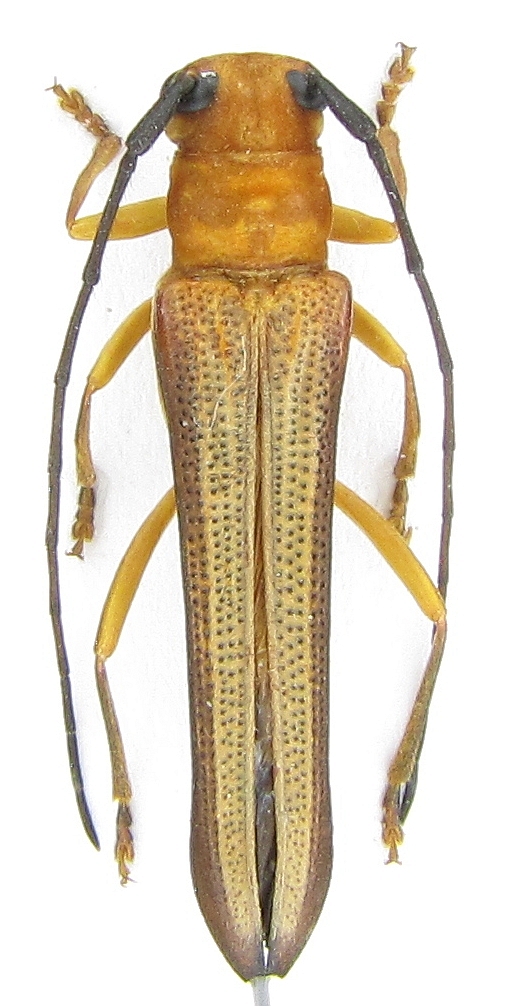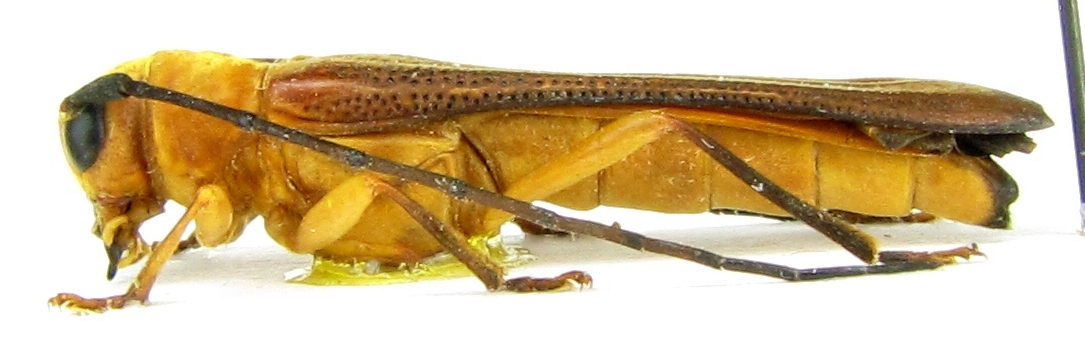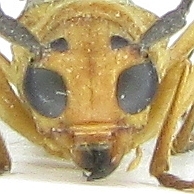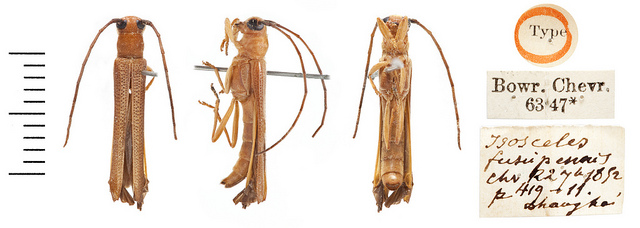| T O P I C R E V I E W |
| Vitali |
Posted - 25/03/2013 : 13:49:55

293.54 KB
Ventral side is completely yellow. |
| 15 L A T E S T R E P L I E S (Newest First) |
| Vitali |
Posted - 25/02/2017 : 11:16:00
OK, Xavier. Thank you very much. Let us wait for new characters. |
| Xavier |
Posted - 25/02/2017 : 10:22:38
Takashi answer me that O. fuscipennis group species ( O. fuscipennis & O. holoxantha Fairmaire, 1888) is a difficult one; but " O. fuscipennis and O. holoxantha can easily distinguish by the difference of male genitalia."
He will send me later how to make the difference between the two species by the external charactors |
| Xavier |
Posted - 24/02/2017 : 16:45:42
yes, all parts of the body are exactly similar.
I try to check it with Mr. Kurihara... |
| Vitali |
Posted - 24/02/2017 : 16:20:08
Do your specimens also have darkened pygidium and dark antennae? |
| Xavier |
Posted - 24/02/2017 : 13:34:06
Ok for me; my identical specimens have the same ID; Francesco is right. |
| Vitali |
Posted - 24/02/2017 : 13:13:29

208.51 KB
A promised lateral view. |
| Vitali |
Posted - 23/02/2017 : 14:20:29
Not yet. I'll try to take a photo tonight. |
| Xavier |
Posted - 23/02/2017 : 14:08:31
 May be. May be.
First, do you have a lateral view to see how long hind femora is ? |
| Vitali |
Posted - 23/02/2017 : 13:38:23
Maybe Xavier and Kurahira can help? |
| Vitali |
Posted - 29/03/2013 : 11:31:49
Sorry again, first I did not notice the black margin of the last sternite  |
| Francesco |
Posted - 29/03/2013 : 11:28:07
quote:
Originally posted by Vitali
Ventral side is completely yellow.
Ah! 
The ventral side was not completely yellow.
I have to check the keys another time. |
| Vitali |
Posted - 27/03/2013 : 22:59:45
Here is the face of a male. Cheeks are remarkably short.

45.38 KB
... and last abdominal segments. Last sternite is with a strong dent in male.

32.43 KB |
| Vitali |
Posted - 27/03/2013 : 21:25:16
Very interesting.
O. fuscipennis has nothing black in the apical part of abdomen.
I am almost sure now, my beetle does not belong to this species. I'll try to show the photo of the abdomen, when I have more time.
Some other observations: all my 3 specimens have laterally darkened elytra, like in photo above. Eyes are larger in male, and correspondingly the ratio eye/cheek (it is a female in my photo).
The "Iconography..." is a book of a dubious value. It presents photos and descriptions of 1406 spp, but leaves 1767 non-described and non-photoed. By the way, there are such names among non-photoed species, which sound perspective with respect to my beetle, e.g., O. rufiniventris Breuning, 1968, O. rufosternalis Breuning, 1968... But this may mean nothing. |
| Francesco |
Posted - 27/03/2013 : 18:54:14

78.26 KB
I am not sure that the picture of that book corresponds to O. fuscipennis.
This is the type of the species.
Actually, the eyes of your specimen are smaller, but I did not find a species with such character. The size is too large as well.
According to Breuning (1963), the whole pygidium of O. humeralis is black except for the yellow base.
This corresponds to my specimen (that of the link). |
| Vitali |
Posted - 27/03/2013 : 09:01:10
I am afraid, O. fuscipennis is not correct, at least according to Iconography of Chinese Longicorn Beetles. The description says it is a slender species with a long pronotum, which is clearly seen also in photo 1137 presented there. On the contrary, O. humeralis has a transverse pronotum, somewhat swollen dorsally and laterally. These features fit my photo.
There are some doubts concerning O. humeralis as well. In the photo you cited above, the whole pygidium is black. In my 3 specimens only the apical part of last tergite (a spot half-round towards front, about 1/3 of tergite) and the hind margin of last sternite is black. Besides, the size given for O. humeralis is 17-18.6 mm, while my beetles are between 19 and 23 mm. |


